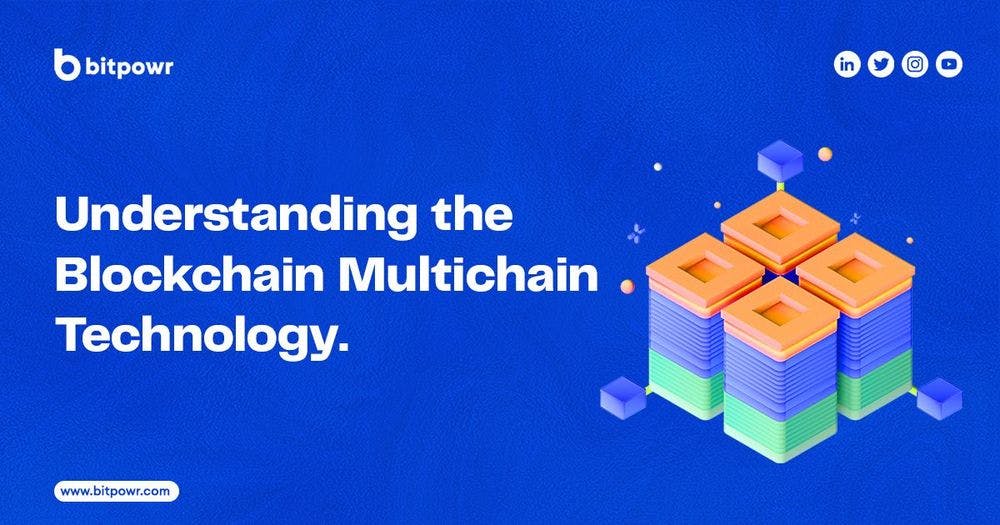Blockchain technology is undergoing a transformative shift, similar to how the internet evolved from disconnected networks to a connected ecosystem. This shift aims to make blockchain more accessible and user-friendly, especially for newcomers. Currently, decentralized applications (DApps) can be complex and expensive, hindering their widespread adoption. However, the emergence of multichain technologies is changing the game by enabling uninterrupted activities across different blockchains, much like how the internet seamlessly connects various websites and applications.
What is Multichain
Multichain refers to blockchain technology that allows for the creation and operation of multiple independent blockchains within a single network. Unlike traditional blockchains like Bitcoin or Ethereum, which are single-chain networks, multichain enables the simultaneous existence of multiple interconnected chains.
Each chain in a multichain network can have its own set of rules, consensus mechanisms, and permissions. These chains can be private or public, depending on the specific use case and requirements of the network participants. Additionally, multichain platforms often provide interoperability features that enable seamless communication and asset transfers between different chains within the network.
Multichain technology, which represents a paradigm shift in the blockchain landscape, involves interconnected blockchains across layer 0, layer 1, and layer 2. To fully grasp multichain, it’s important to understand the three layers within the blockchain ecosystem: layer 0, layer 1, and layer 2
The Challenges of Today:
Today, Ethereum stands as the default blockchain for most DeFi projects and DApps. However, Ethereum’s scalability issues, such as high gas fees and complicated onboarding processes, have posed challenges for developers and users alike. This has prompted the rise of alternative blockchains like Binance Smart Chain, Solana, Cosmos, and layer-two solutions like Polygon. Contrary to popular belief, these alternatives are not intended to replace Ethereum but to offer a multichain approach to building Web 3.0, acknowledging that no single blockchain can meet all needs.
The Vision of a Multichain Future:
In a multichain world, the focus shifts from competition to cooperation, facilitating the interconnection of new chains to enhance the user experience. This vision enables developers and users to build and operate seamlessly across different blockchains. For example, in the financial sector, interoperability between banks using different blockchains would simplify transactions and communication between customers. This interconnected ecosystem depends on cross-chain solutions and Ethereum Virtual Machine compatibility, allowing blockchains to communicate directly, much like how the internet functions today.
The concept of multichain has gained significance due to several reasons:
- Scalability: Multichain networks can enhance scalability by allowing for parallel processing and reducing congestion on a single chain. This is particularly important as blockchain technology continues to evolve and attract more users, causing scalability issues on some existing networks.
- Customization and Flexibility: Multichain enables organizations and developers to create specialized chains that suit their specific needs. They can customize parameters such as transaction speed, privacy, governance models, and consensus algorithms according to their requirements.
- Privacy and Security: Multichain platforms often provide features to enhance privacy and security. Participants can choose to keep certain transactions private within a specific chain, while still enjoying the benefits of a public network for other interactions.
- Use Case Specificity: Different applications and industries have unique requirements. Multichain allows for the development of tailored blockchains for specific use cases, such as supply chain management, finance, healthcare, and more. These chains can be designed to optimize efficiency and address the particular needs of the industry.
- Interoperability: Multichain networks facilitate interoperability between different chains within the same ecosystem. This enables the seamless transfer of assets and information between chains, promoting collaboration and integration between various applications and platforms.
Bitpowr understands the significance of supporting the multichain ecosystem, as it empowers developers with the necessary tools to succeed and build fast and secure blockchain-based products. By offering support for multiple blockchains and providing a streamlined onboarding process, Bitpowr enables companies from various industries, including Fintechs, Neobanks, OTC desks, and Exchanges, to swiftly integrate and start building applications without the hassle of searching for skilled engineers. This commitment to multichain opens up endless possibilities and paves the way for mainstream adoption in the blockchain realm. Currently, Bitpowr supports over 16 blockchains, with plans to expand support to additional chains in the future.
Let’s chat about how we can help you build faster with support from multiple chains




